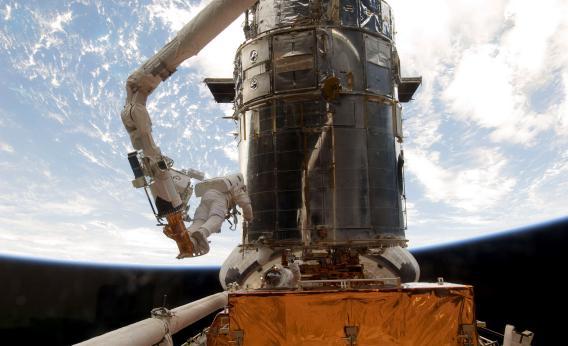You’d be forgiven for never having heard of the National Reconnaissance Office, a government agency that manages U.S. spy satellites. One of 16 intelligence organizations, it stays largely in the shadows—that is, until a new technology gets perfected, an old one becomes obsolete, and suddenly NASA winds up with two cutting-edge military telescopes more powerful than the Hubble.
Following a shift in its own surveillance needs—the intelligence agency is transitioning to a new type of satellite with a broader view—the NRO has given NASA a pair of machines with 100 times the Hubble’s field of vision. They are shorter, squatter, and lighter than the NASA celebri-scope, and they can fit more machinery in back. In addition, they boast a flexible secondary mirror that renders images in clearer focus. “This is going to be top-quality hardware,” an analyst (speaking anonymously, because we’re in Mission Impossible territory) told the Washington Post. “They’re not state-of-the-art spy satellites, but they are probably still state-of-the-art optics.”
But, as in most spy thrillers, there’s a catch. The NRO telescopes have been gutted of their instruments (cameras, sensors, spectrographs, etc); they have no support staff or office space; they lack, as the Washington Post’s Joel Achenbach writes, “a funded mission and all that entails.” Even worse, NASA is struggling under the weight of serious financial woes. Its infrared-light-collecting Webb telescope, which is currently scheduled to launch in 2018, has already vacuumed up much of the agency’s science budget. NASA Astrophysics director Paul Hertz doubts his team will get even one of the new machines off the ground before 2024.
Still, each fine-tuned piece of military hardware is likely to save NASA at least $250 million in building costs down the road. And the donations soften the blow of the Hubble’s impending watery downfall. (Over the next few years, the famous telescope will wear out, slip back into the Earth’s atmosphere, and plunge into the Pacific Ocean.)
Originally designed to shed light on human affairs, the twin spy satellites—if launched—will likely be used to study dark energy, a mysterious force that may have a hand in the universe’s expansion.
